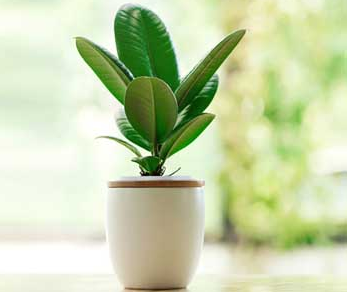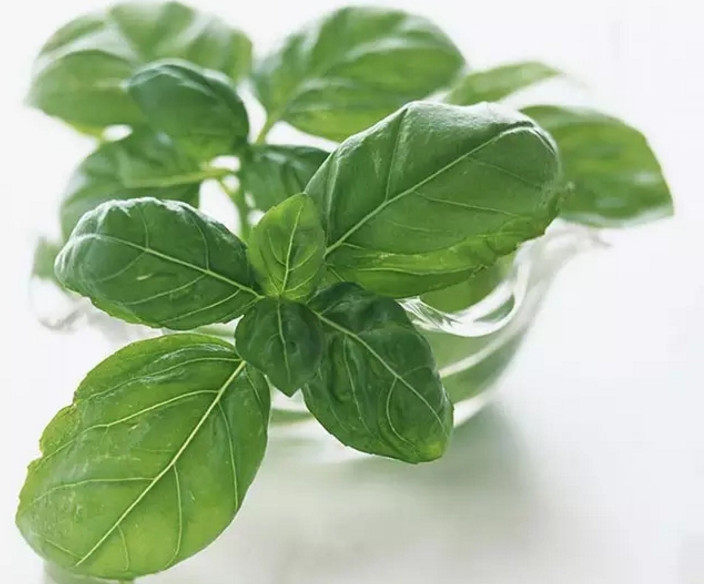Does rubber tree blossom? how to reproduce?
When it comes to this rubber tree, it still looks like Magnolia magnolia. Many people will admit their mistakes and see if the rubber tree blossoms. How do rubber trees reproduce?

Does the rubber tree bloom:
Rubber tree is to blossom, but flowering requires certain conditions, if planted in the country of origin, the probability of flowering is very high, flowers petite and lovely, there are five petals, the outside petals are white, the petals inside are yellow, the heart is orange, quite beautiful. Rubber trees rarely blossom since they were planted in pots, because the temperature and humidity could not reach the conditions for flowering.
The flowers and leaves of the rubber tree are toxic and harmful to the human body, but you don't need to worry too much when you buy them, because as long as you don't eat it, you won't be poisoned, and you can put it in any certain place at home. In order to avoid poisoning, children should be warned not to pick leaves and flowers from potted plants.
How rubber trees reproduce:
Cutting is one of the propagation methods of rubber tree, which has the characteristics of simple operation and high survival rate, and can be combined with pruning. First of all, the rubber tree is pruned at the end of spring, and then the middle semi-lignified branches are selected as cuttings, and finally cut in plain sand. Before cutting, remember to cut off the extra leaves of the branches, leaving only 2 leaves. In addition, in order to avoid the loss of milk, the branches should be cut off to seal the wound with clay. Keep the soil highly moist after cutting, do a good job of shading, and increase the light after the new buds sprout.
High-branch striping method is also one of the propagation methods of rubber trees, the operation is relatively simple, but the success rate is not as high as the cutting method. First of all, select the well-developed, pest-free branches, peel off the outside, and apply naphthalene acetic acid solution, then wrap the bottom of the branches with plastic film, tie them tightly and keep them on the sponge, press the strips in June and take root in July-August.
Rubber trees are supposed to blossom, but the flowers of rubber trees are poisonous, so it's better not to touch them. The breeding methods of rubber trees are also introduced here, so don't hurry up to raise a few more trees in your own home.
Does the rubber tree blossom? picture appreciation of the rubber tree blooming.
The rubber tree actually has a very good ornamental value, because it also belongs to the evergreen plant of the four seasons. The large trees of the genus Hevea have obvious trunk, few branches, and have air roots. Rubber trees have high ornamental value and belong to famous potted foliage plants. So does the rubber tree bloom? Let's look at the picture of the rubber tree blooming and see if the rubber tree blossoms or not.
Rubber trees are placed indoors for beautification, small and medium-sized plants are often used to beautify the living room and study, while medium and large rubber trees are properly arranged on both sides of the foyer of large buildings and in the center of the lobby, so that they can be magnificent and reflect tropical scenery.
[rubber tree photo appreciation 2] Rubber tree likes high temperature, humid and sunny environment, and the most suitable temperature for its growth is 20-25 degrees, taboo sunlight on it, it can also be very shade-resistant but not cold-resistant, the safe winter temperature is about 5 degrees, resistant to air dryness and taboo clayey soil, not resistant to barren and dry soil. I like loose, fertile and slightly acidic soil with good drainage.
[rubber tree photo appreciation 3] the varieties and varieties we often see are: the leaf edge of Phnom Penh rubber tree is golden, the leaf edge of flower leaf rubber tree is slightly rounded, there are many irregular yellow and white patches on the leaves, and the growth is relatively weak, and the reproduction is relatively slow. The leaves of the white-spotted rubber tree are relatively narrow and there are many white patches. The leaves of the Venus broad-leaf rubber tree are much larger than those of ordinary rubber trees, and when they are young, they are brownish-red-green leaves that grow slightly close to the edge of scattered sparse needle-sized spots. It is an excellent variety of rubber tree.
[rubber tree photo appreciation 4] Rubber tree has a unique dust purification function, but also can purify formaldehyde in volatile substances, rubber tree can also absorb carbon monoxide and carbon dioxide in the air, so that the air is purified. Rubber trees like sunny places to ensure that they can exuberantly carry out photosynthesis and transpiration, and it is most suitable for dusty offices to be placed by the window. Rubber tree is not hardy, so we should not put it in a place with lower temperature in winter.
[does the rubber tree bloom?] the rubber tree blossoms, and its flowers are very small, without petals, and many small flowers are hidden in a small jar-like receptacle. Its flowering period can be as long as several months. They are hidden inflorescences. There are no common flowers. Very small flowers are hidden on the inner wall of the invisible receptacle. There is a small hole at the top of the receptacle that communicates with the outside. Bugs can go in and out of the hole to pollinate the florets inside. Introduced rubber tree pot cultivation is usually not able to reach the scale of flowering, so we usually rarely see it blossom and bear fruit.
Does the rubber tree blossom? Appreciation of rubber tree pictures
Rubber trees are evergreen woody foliage plants. Its mosaic variety has yellow and white patches on the green leaves, which is more beautiful and pleasing to the eye, but its leaves are poisonous. The young leaves on the leaves are thick, leathery, glossy, oval to long with a round leaf surface dark green or reddish green abaxially light green. So, does the rubber tree bloom? Why do few of our rubber trees blossom?
[rubber tree picture appreciation 1]
Rubber trees are placed indoors for beautification, small and medium-sized plants are often used to beautify the living room, study, etc., while medium and large rubber trees are properly arranged on both sides of the foyer of large buildings and in the center of the lobby. it will be magnificent and can also reflect the tropical scenery.
[rubber Tree Picture appreciation II]
Rubber tree likes high temperature, humid and sunny environment, and the most suitable temperature for its growth is 20-25 degrees, taboo direct sunlight on it, it can also be very shade-resistant but not cold-resistant, the temperature of safe wintering is about 5 degrees, resistant to air dryness and taboo clayey soil, not resistant to barren and dry soil, like loose, fertile and slightly acidic soil with good drainage.
[rubber Tree Picture appreciation 3]
The varieties and varieties we often see are: the leaf edge of Phnom Penh rubber tree is golden, the leaf edge of flower leaf rubber tree is slightly round, there are many irregular yellow and white patches on the leaves, and the growth potential is relatively weak. Reproduction is also slow. The leaves of the white-spotted rubber tree are relatively narrow and there are many white patches. The leaves of the Venus broad-leaf rubber tree are much larger than those of ordinary rubber trees, and when they are young, they are brownish-red-green leaves that grow slightly close to the edge of scattered sparse needle-sized spots. It is an excellent variety of rubber tree.
[rubber Tree Picture appreciation IV]
Rubber tree has a unique function of purifying dust, but also can purify formaldehyde in volatile substances, rubber tree can also absorb carbon monoxide and carbon dioxide in the air, so that the air can be purified. Rubber trees like sunny places to ensure that they can exuberantly carry out photosynthesis and transpiration, and it is most suitable for dusty offices to be placed by the window. Rubber tree is not hardy, so we should not put it in a place with lower temperature in winter.
[does the rubber tree bloom]
Rubber tree it will blossom, and its flowers are very small, no petals, and many small flowers hidden in a small jar-like receptacle, its flowering period can be as long as several months, they are hidden inflorescences, there are no common flowers, very small flowers hidden in the invisible inner wall of the receptacle, there is a small hole at the top of the receptacle, which communicates with the outside, and the bug can go in and out of the hole to pollinate the florets inside. Introduced rubber tree pot cultivation is usually not able to reach the scale of flowering, so we usually rarely see it blossom and bear fruit.
After the introduction of the rubber tree above and the appreciation of the pictures of the rubber tree, I believe we all know that the rubber tree is flowering, but the rubber tree we raise is very difficult to reach the flowering scale. that's why the rubber trees we bloom are not blooming. For more information about rubber trees, please stay tuned.
- Prev

How to plant Jiangxiang
How to plant Jiangxiang
- Next

Basil hydroponics method step by step often change water
Basil is a plant that can be eaten and tastes a bit like fennel. Basil can not only be used to eat, but also can be hydroponically cultivated. Let's take a look at the steps of basil hydroponics: materials: 10cm basil branches cut off with leaves. Container: transparent glass
Related
- Fuxing push coffee new agricultural production and marketing class: lack of small-scale processing plants
- Jujube rice field leisure farm deep ploughing Yilan for five years to create a space for organic food and play
- Nongyu Farm-A trial of organic papaya for brave women with advanced technology
- Four points for attention in the prevention and control of diseases and insect pests of edible fungi
- How to add nutrient solution to Edible Fungi
- Is there any good way to control edible fungus mites?
- Open Inoculation Technology of Edible Fungi
- Is there any clever way to use fertilizer for edible fungus in winter?
- What agents are used to kill the pathogens of edible fungi in the mushroom shed?
- Rapid drying of Edible Fungi

